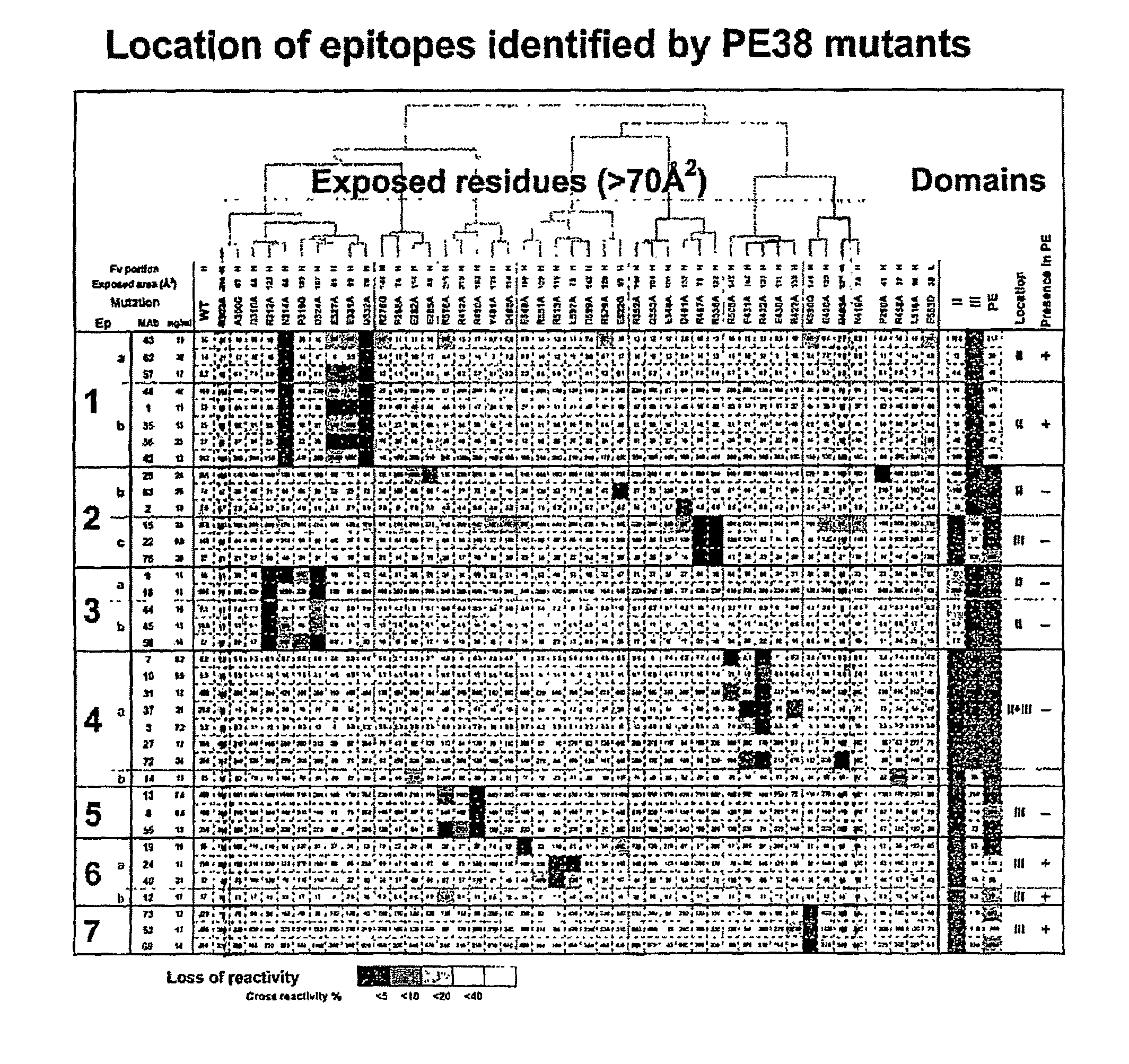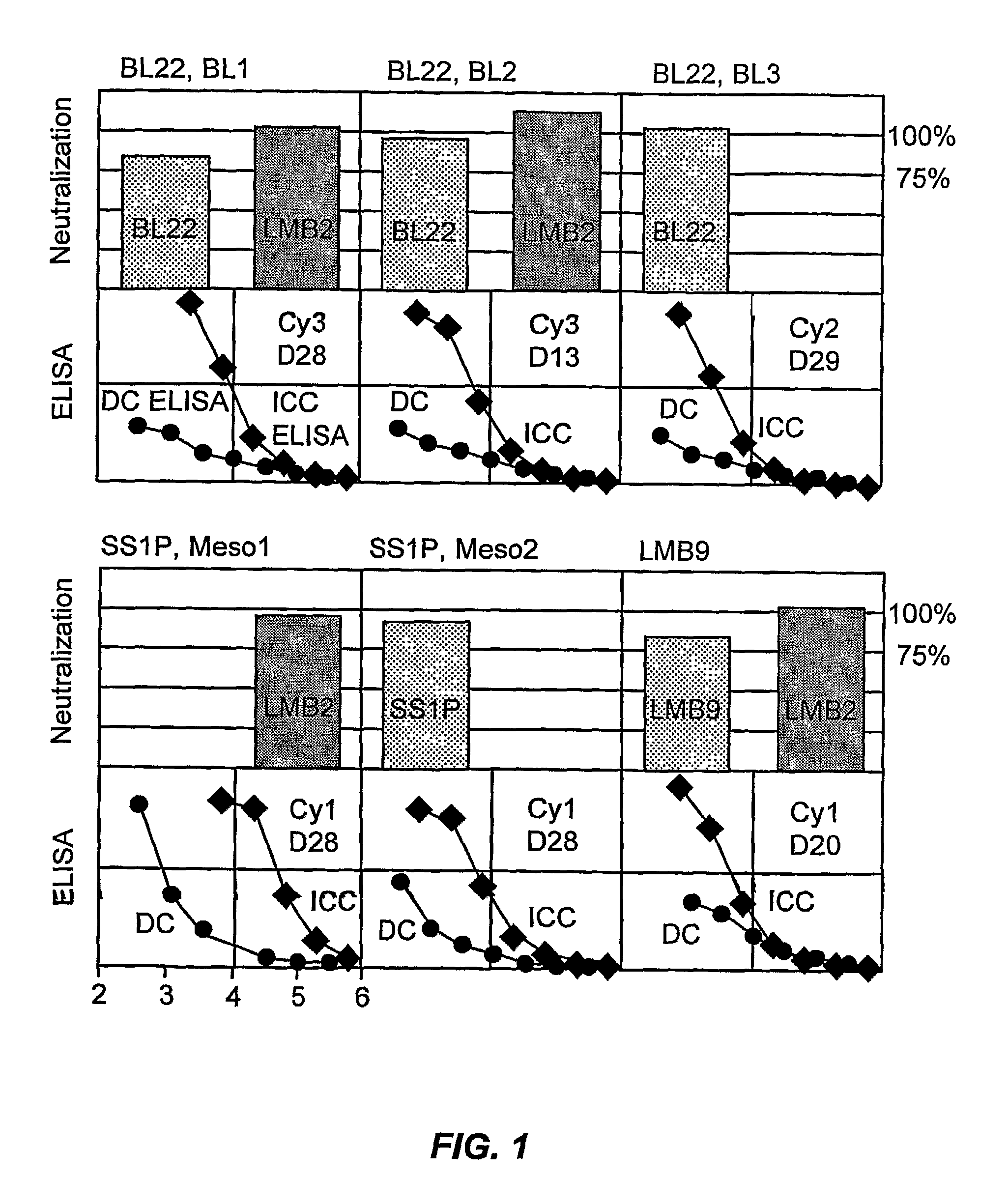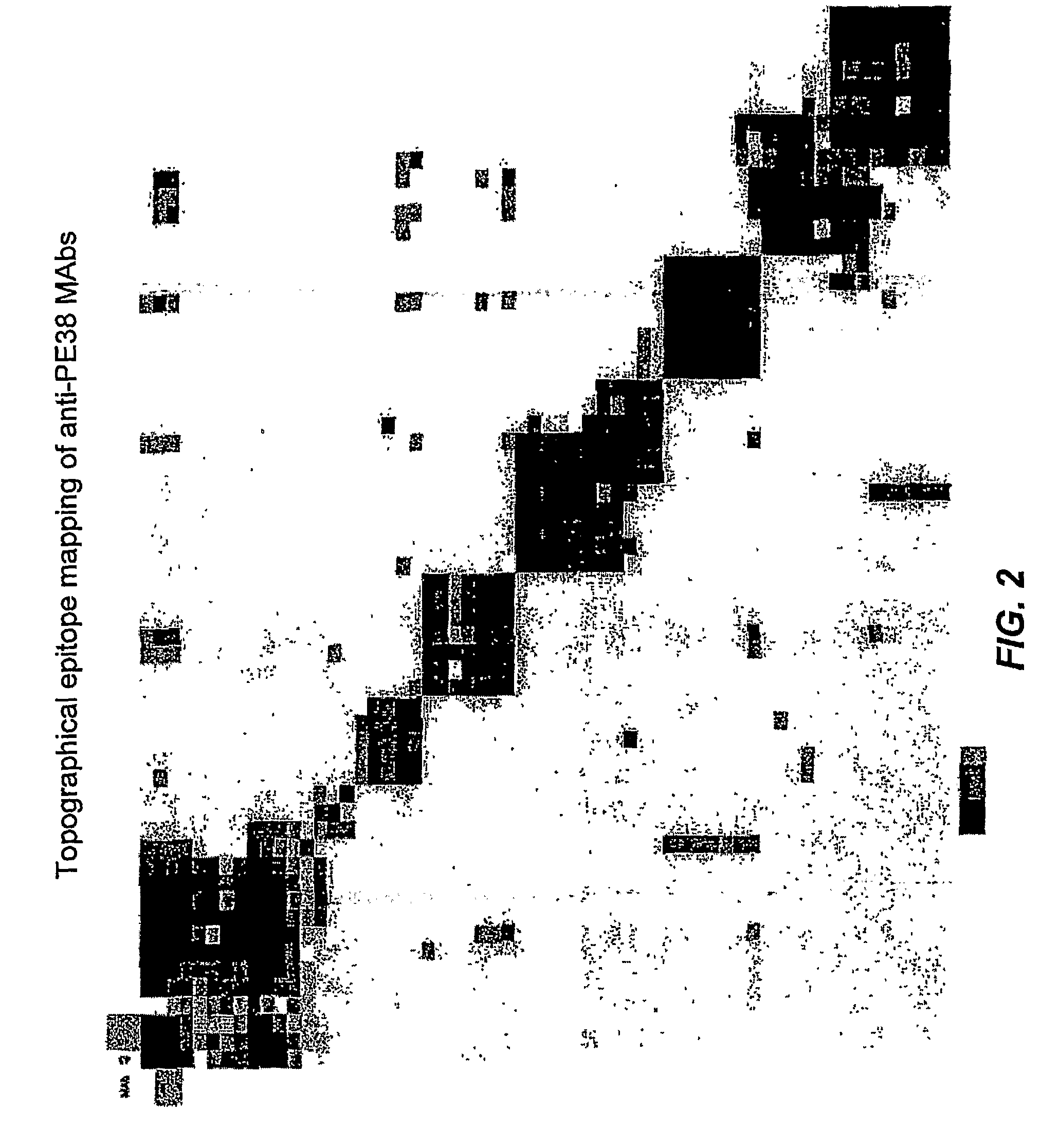Mutated Pseudomonas exotoxins with reduced antigenicity
a technology of pseudomonas exotoxins and antigenicity, applied in the field of immunoconjugating, can solve the problems of often compromised immune system ability to mount a respons
- Summary
- Abstract
- Description
- Claims
- Application Information
AI Technical Summary
Benefits of technology
Problems solved by technology
Method used
Image
Examples
example 1
[0136]This Example sets forth the experimental procedures used in, and the results of, the studies reflected in FIG. 1.
Experimental Procedure
[0137]Immune complex capture (“ICC”)-ELISA: ICC ELISA detects Ag-Ab reactions in solution. Microtiter plates were coated with 2 μg / ml of CD25-rabbit Fc (human CD25 alpha extra-cellular domain fused to the Fc of rabbit IgG1) or with CD22-hFc human CD22 extracellular domain fused to the Fc of human IgG1) in phosphate buffered saline (PBS) for over night at 4° C. In a separate tube, Ab samples were serially diluted in blocking buffer, and mixed with 2 μg / ml of anti-CD22 or anti-CD25 immunotoxin. The plates were washed, and then, the immunotoxin-Ab mixtures were transferred individual wells. The plates were incubated more than 1 hr at room temperature (“RT”). The immune complexes captured on wells were detected by horserasdish peroxidase (“HRP”)-conjugated goat anti-mouse IgG. After incubation for 1 hr at RT, the plates were washed, and tetramethyl...
example 2
Experimental Procedure
[0143]MAbs against PE38 were produced by a standard fusion protocol. Balb / c, A / J, C3H strains of mice were immunized 4-5 times by injection of 4-10 μg of various ITs at 2 weeks intervals. Four weeks after the final injection, the mice were boosted with 4 μg IT and 4 days later the fusion carried out. Spleen cells were isolated and fused with SP2 / 0 myeloma cells. After selection in hypoxanthine / aminopterine / thymidine medium, the supernatants were screened for specific antibody production with ICC ELISA and / or a neutralization assay and / or ELISA with microtiter plates coated with a 1 mg / ml solution of ITs in PBS. The bound immunoglobulins were detected with horseradish peroxidase-conjugated mouse anti-kappa IgG or goat anti-mouse IgG (Jackson). Positive clones were used for the production of antibodies in culture supernatants.
Immunization Strategy
[0144]To obtain monoclonal antibodies that react with conformational epitopes on the native structure of the immunotox...
example 3
[0147]This Example sets forth the experimental procedures used in, and the results of, the studies reflected in FIG. 2.
Experimental Procedure
[0148]Mutual competition of all possible pairs of anti-PE38 MAbs was examined as previously described (Nagata et al., “Rapid grouping of monoclonal antibodies based on their topographical epitopes by a label-free competitive immunoassay,” J. Immunol. Methods 292:141-155 (2004)). Microtiter plates (MaxiSoap, Nalge Nunc, Rochester, N.Y.) were coated with 200 ng / 50 μg / well of goat anti-mouse IgG (Jackson Immuno Research, Grove, Pa.) in PBS overnight at 4° C. After washing 2 μg / ml of indicator MAb #1 (culture supernatant of hybridoma culture) was added to each well and incubated overnight at 4° C. In a separate tube, competitor MAb #2 was diluted (6 μg / ml) in blocking buffer and mixed with 10 ng / ml of anti-CD30 IT, T6 and incubated overnight at 4° C. The plates were washed twice, and then the MAb #2 IT mixture was transferred to each well (50 μg / ml...
PUM
| Property | Measurement | Unit |
|---|---|---|
| average bond energy | aaaaa | aaaaa |
| temperature | aaaaa | aaaaa |
| temperature | aaaaa | aaaaa |
Abstract
Description
Claims
Application Information
 Login to View More
Login to View More - R&D
- Intellectual Property
- Life Sciences
- Materials
- Tech Scout
- Unparalleled Data Quality
- Higher Quality Content
- 60% Fewer Hallucinations
Browse by: Latest US Patents, China's latest patents, Technical Efficacy Thesaurus, Application Domain, Technology Topic, Popular Technical Reports.
© 2025 PatSnap. All rights reserved.Legal|Privacy policy|Modern Slavery Act Transparency Statement|Sitemap|About US| Contact US: help@patsnap.com



